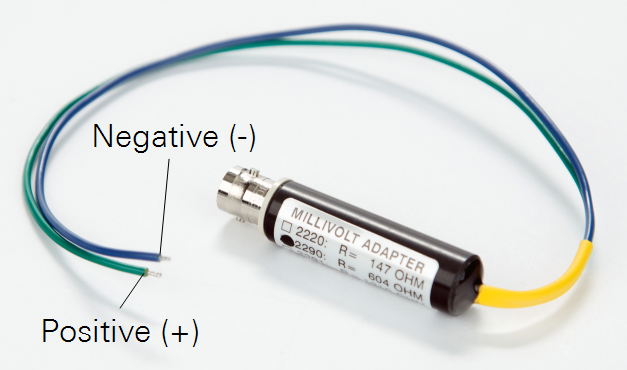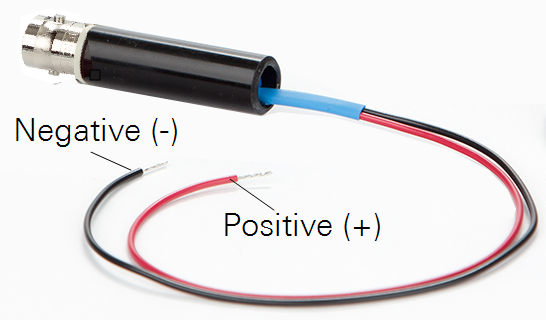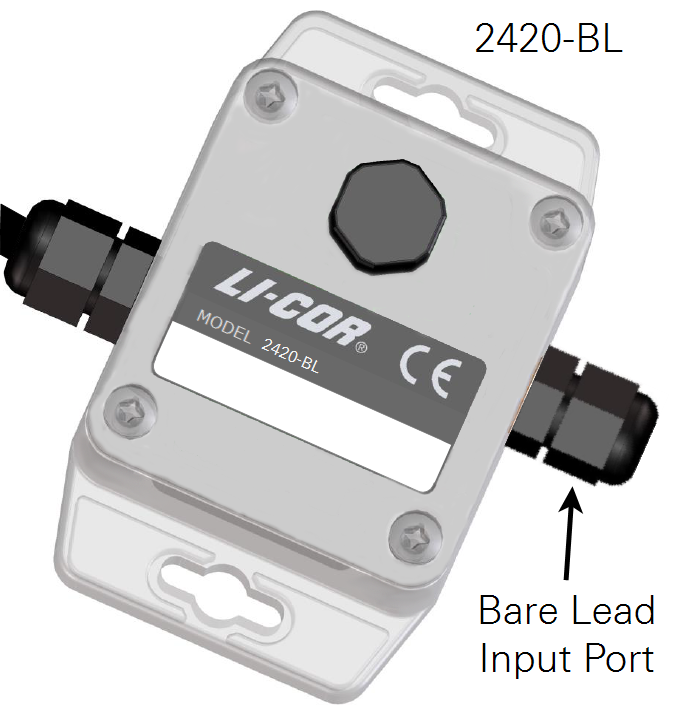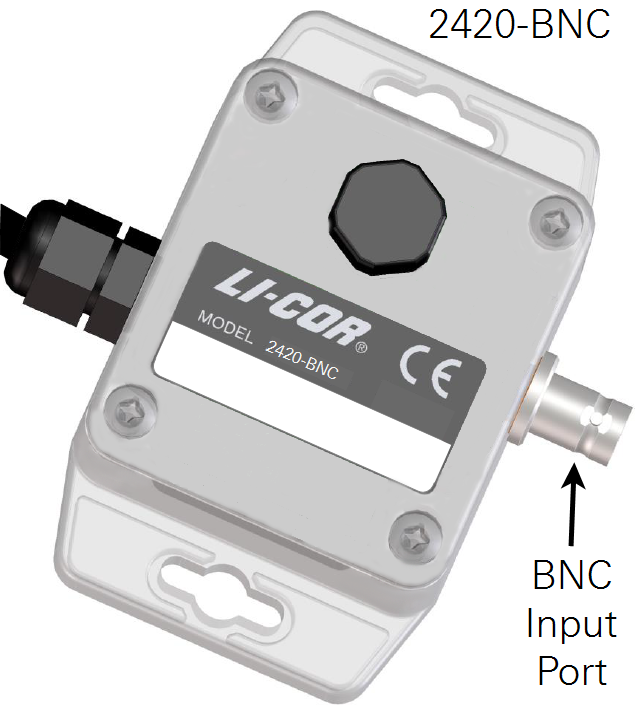Connecting LI-COR light sensors to voltage-reading data loggers
Printable PDF: Connecting LI-COR light sensors to voltage-reading data loggers
Instructions for converting LI-COR light sensor output to voltage.
Millivolt adapter
LI-COR can provide millivolt adapters (which contain a precision resistor) for use with our type BNC light sensors; these adapters have a BNC connector that mates with the sensor, and are terminated with bare wire leads for connection to a datalogger. The shield of the coaxial cable and collar of the BNC connector carry the positive signal, whereas the center conductor carries the negative signal. This arrangement reduces electronic interference. More details can be found in instruction manuals for light sensors.

When wiring to a datalogger for a differential voltage measurement, the LI-COR light sensor needs to also be referenced to the datalogger ground through a separate connection. This can be done with a jumper wire between the low side of the differential input and an analog ground channel. This will hold the sensor in common mode range. Each sensor that LI-COR manufactures has a calibration constant specific to that sensor. This constant is provided on the sensor’s calibration certificate. There are actually two coefficients listed on each sheet. There is a calibration constant (for example, ‘C’ uAmps per 1000 mol s-1 m-2) and a calibration multiplier (‘-M’ mol s-1 m-2 per amp). The multiplier is typically used when using our LI-COR LI-1500 Datalogger or the LI-250A Light Meter (which can both measure current). Below are the equations to obtain the correct multiplier for a voltage-reading data logger:
First convert the output units of the calibration constant from a current into a voltage:
1
The multiplier would then be the negative reciprocal of this:
2
The resulting multiplier value is entered into the datalogger program as units of mol s-1 m-2 for the LI-190R-BNC, W m-2 mV-1 for the LI-200R-BNC, and Klux mV-1 for the LI-210R-BNC. Here is an example calculation using information from a LI-190R-BNC sensor. From the calibration sheet, the calibration constant is:
3
Using the above equation, convert the calibration constant output units from a current to a voltage using the resistor value of 604 ohms (in the 2290 Millivolt Adapter):
4
The negative reciprocal of this would compute the multiplier for this sensor:
5
Standardized millivolt adapter
Another option is to purchase and use a standardized millivolt adapter. The SMV option for LI-COR light sensors includes a millivolt adapter that is standardized to the individual sensor. The standardized millivolt adapters are paired with a specific sensor and individually adjusted to standardize the sensor output. This eliminates the need to enter unique calibration constants or multipliers for each sensor.

The maximum output of LI-COR light sensors in typical sunlight is relatively small (microAmps of current) and converts into a small voltage (less than 25 millivolts). To monitor these sensors with expected accuracy, a data logger needs to have very good resolution. The data logger needs to have the ability to measure down into the microvolt (or 0.1 millivolt) range. To increase sensitivity, make sure the voltage range of the channel is set as close as possible to the full-scale range of the Sensor. For example, set the range of the voltage channel to read from 0-to-25 mV which should cover the range of values expected in a natural sunlight environment.
Light sensor amplifier
If the data logger does not have the ability to measure microvolt signals, does not have the ability to set channel voltage ranges down to a 0-25 mV level, or both, another option must be considered. If the data logger requires a larger input voltage or current signal, an amplifier will need to be used to boost the Sensor’s output signal. LI-COR manufactures the 2420 Light Sensor Amplifier, which converts the A current from a light sensor into a voltage that can be measured by most data loggers and system controllers. The 2420 Amplifier provides 15 user-selectable gain settings to accommodate a variety of applications. Model 2420-BNC works with light sensors that have BNC connectors while model 2420-BL works with light sensors that have bare leads.


